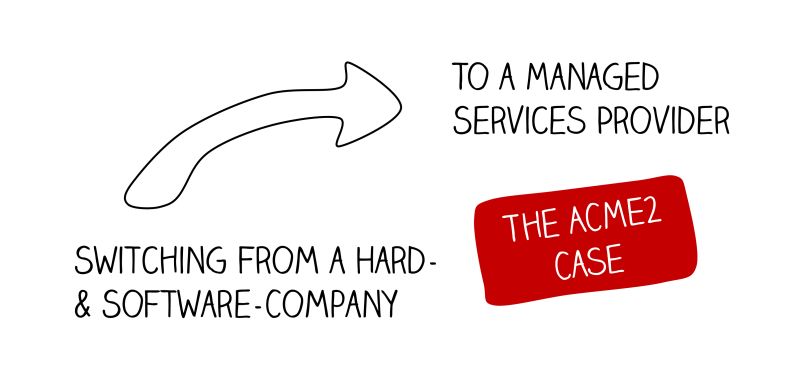Speaking of Pivot Patterns: How switching to a managed services business model re-ignited growth at ACME2.
I just wrapped up a 6-month progress review with the team at ACME2, a tech company selling analytical software combined with a small hardware device.
Here’s how we flipped their trajectory:
ACME2 did everything right on the tech side — great software, powerful small diagnostics device.
However, the team was struggling to get past the trial phase or win bigger deals within their targeted pharmaceutical clients, despite successful pilots.
We looked closer. And one thing stood out:
Their pilots only worked when the customer’s personnel in the lab were tech-savvy. It turned out the pilots were always run by people keen on using new technologies — but the other labs, with fewer technicians on the team, did not adopt the product.
Not because the product was bad, but because, to the non-tech-savvy users, it felt like much more work.
That’s the part many tech founders miss.
Your customers do not ask for a great tech solution or for outstanding features.
They look for an outcome, created as simply as possible, without the headache of having to learn or “manage” something new.
So we looked at how companies in similar industries cracked this and flipped the model:
- → They stopped selling the product “stand-alone.”
- → Added a host of services around the core product.
- → Took over the process to provide a working environment end-to-end for the customer.
The result:
Customers get the outcome they want without lifting a finger.
The company started charging for the services they were already partly providing behind the scenes as troubleshooters (for free, at the time…).
Within 6 months, revenue and margins were both up 30%.
In a nutshell: the tech product didn’t change. The delivery model did. Now they manage the complete working environment around their solution, in a managed services business model.
Even if switching to a managed service model felt risky and less scalable at first, that one strategic shift changed everything for ACME2.
The key lesson here:
Too many tech-oriented founder teams try to wedge their product into places where people just want a job done. They overbuild tools when they should focus on outcomes, delivered as easily as possible.
If your customers are not using your product, maybe they do not want more features.
Maybe they simply want you to take care of the whole problem and make sure they can achieve their core business needs, without any tech hassle.
If this sounds like your last two quarters, my DMs are open. Happy to assess what’s stalling growth post-hype + suggest scalable moves.
Till then: let me know — have you seen something similar in your business? What finally moved the needle?

